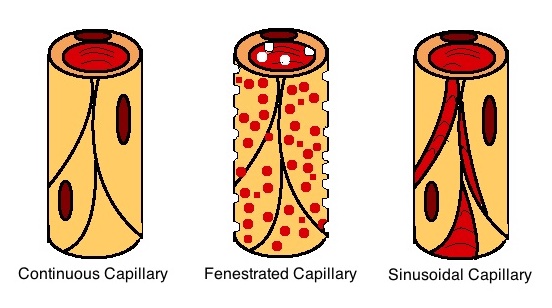|
Convoluted Tubule
Convoluted tubule is the compound of a metanephridium which is wrapped with Capillary, capillaries. It is highly coiled so as to increase surface area for more effective reabsorption, which occurs in this part of the metanephridium. The distal tubule of the mammalian kidney is the portion of the nephron located between the macula densa region and the cortical collecting tubule. It consists of various subsegments that differ in structure and function, and it is responsible for reabsorbing 5-10% of filtered sodium and chloride under normal circumstances, as well as playing a significant role in potassium secretion. Additionally, this segment is crucial for maintaining systemic calcium and magnesium balance, as well as aiding in net acid secretion. Inherited disorders affecting the function of distal tubule cells can result in abnormalities in extracellular fluid volume, potassium, calcium, and magnesium levels, underscoring the importance of the distal tubule in human physiology and ... [...More Info...] [...Related Items...] OR: [Wikipedia] [Google] [Baidu] |
Metanephridium
The nephridium (: nephridia) is an invertebrate organ, found in pairs and performing a function similar to the Kidney (vertebrates), vertebrate kidneys (which originated from the chordate nephridia). Nephridia remove Metabolism, metabolic wastes from an animal's body. Nephridia come in two basic categories: metanephridia and protonephridia. All nephridia- and kidney- having animals belong to the clade Nephrozoa. Metanephridia A metanephridium (''meta'' = "after") is a type of excretion, excretory gland found in many types of invertebrates such as annelids, arthropods and mollusca. (In mollusca, it is known as the Bojanus organ.) A metanephridium typically consists of the nephrostome (a ciliated funnel) opening into the coelom, body cavity, connected to a duct (anatomy), duct which may be variously glandularized, folded or expanded (vesiculate) and which typically opens to the organism's exterior. These ciliated tubules pump water carrying surplus ions, metabolic waste, toxins fro ... [...More Info...] [...Related Items...] OR: [Wikipedia] [Google] [Baidu] |
Capillary
A capillary is a small blood vessel, from 5 to 10 micrometres in diameter, and is part of the microcirculation system. Capillaries are microvessels and the smallest blood vessels in the body. They are composed of only the tunica intima (the innermost layer of an artery or vein), consisting of a thin wall of simple squamous endothelial cells. They are the site of the exchange of many substances from the surrounding interstitial fluid, and they convey blood from the smallest branches of the arteries (arterioles) to those of the veins (venules). Other substances which cross capillaries include water, oxygen, carbon dioxide, urea, glucose, uric acid, lactic acid and creatinine. Lymph capillaries connect with larger lymph vessels to drain lymphatic fluid collected in microcirculation. Etymology ''Capillary'' comes from the Latin word , meaning "of or resembling hair", with use in English beginning in the mid-17th century. The meaning stems from the tiny, hairlike diameter of a capi ... [...More Info...] [...Related Items...] OR: [Wikipedia] [Google] [Baidu] |
Surface Area
The surface area (symbol ''A'') of a solid object is a measure of the total area that the surface of the object occupies. The mathematical definition of surface area in the presence of curved surfaces is considerably more involved than the definition of arc length of one-dimensional curves, or of the surface area for polyhedra (i.e., objects with flat polygonal faces), for which the surface area is the sum of the areas of its faces. Smooth surfaces, such as a sphere, are assigned surface area using their representation as parametric surfaces. This definition of surface area is based on methods of infinitesimal calculus and involves partial derivatives and double integration. A general definition of surface area was sought by Henri Lebesgue and Hermann Minkowski at the turn of the twentieth century. Their work led to the development of geometric measure theory, which studies various notions of surface area for irregular objects of any dimension. An important example is ... [...More Info...] [...Related Items...] OR: [Wikipedia] [Google] [Baidu] |
Reabsorption
In renal physiology, reabsorption, more specifically tubular reabsorption, is the process by which the nephron removes water and solutes from the tubular fluid (pre-urine) and returns them to the circulating blood. It is called ''reabsorption'' (and not ''absorption'') because these substances have already been absorbed once (particularly in the intestines) and the body is reclaiming them from a post glomerular fluid stream that is on its way to becoming urine (that is, they will soon be lost to the urine unless they are reabsorbed from the tubule into the peritubular capillaries). This happens as a result of sodium transport from the lumen into the blood by the Na+/K+ATPase in the basolateral membrane of the epithelial cells. Thus, the glomerular filtrate becomes more concentrated, which is one of the steps in forming urine. Nephrons are divided into five segments, with different segments responsible for reabsorbing different substances. Reabsorption allows many useful ... [...More Info...] [...Related Items...] OR: [Wikipedia] [Google] [Baidu] |
Mammalian Kidney
The mammalian kidneys are a pair of excretory organs of the urinary system of mammals, being functioning Kidney (vertebrates), kidneys in postnatal-to-adult individuals (i. e. Kidney (vertebrates)#Metanephros, metanephric kidneys). The kidneys in mammals are usually bean-shaped or externally lobulated. They are located behind the peritoneum (Retroperitoneal space, retroperitoneally) on the back (Dorsal (anatomy), dorsal) wall of the body. The typical mammalian kidney consists of a renal capsule, a peripheral Renal cortex, cortex, an internal Renal medulla, medulla, one or more Renal calyx, renal calyces, and a renal pelvis. Although the calyces or renal pelvis may be absent in some species. The medulla is made up of one or more renal pyramids, forming papillae with their innermost parts. Generally, urine produced by the cortex and medulla drains from the papillae into the calyces, and then into the renal pelvis, from which urine exits the kidney through the ureter. Nitrogen-contain ... [...More Info...] [...Related Items...] OR: [Wikipedia] [Google] [Baidu] |



